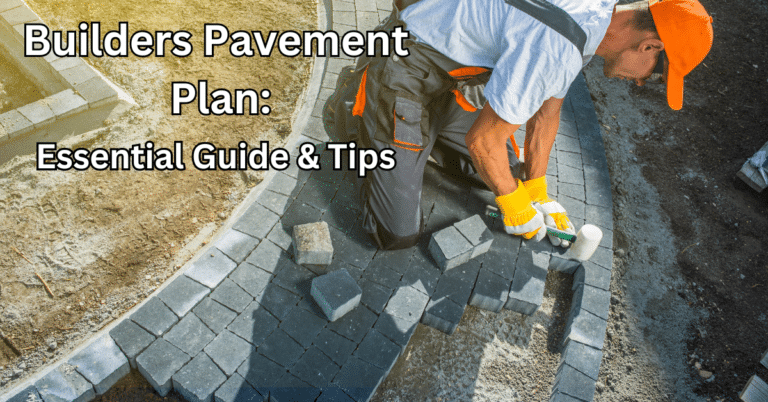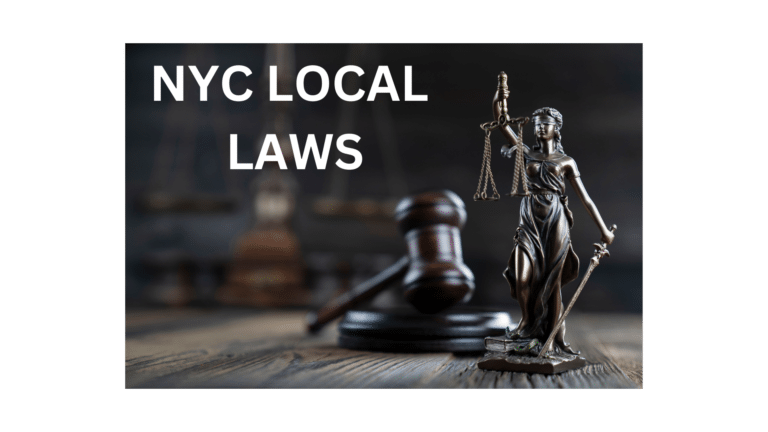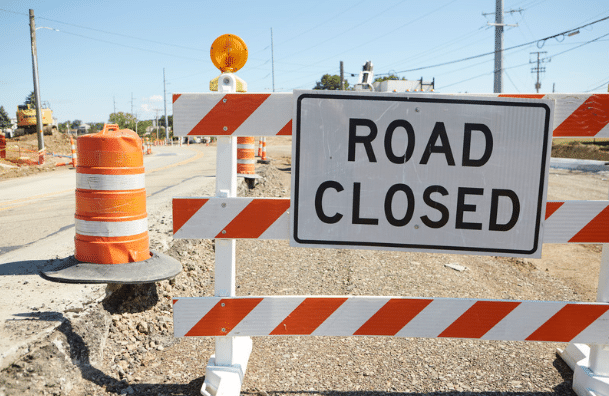Last Updated on March 26, 2025 by Jeffrey Calderon

DOB NYC Permits: Essential Guide for Homeowners, Contractors
When it comes to navigating the complex world of dob nyc, understanding the various permits required for construction and renovation projects is essential.
In this blog post, we will delve into five key permit categories that homeowners and contractors in New York City should be familiar with.
From construction permits to street work permits, our comprehensive guide will provide you with valuable insights on how to successfully obtain these crucial documents from the NYC Department of Buildings (DOB).
Furthermore, we’ll explore utility work permits and signage permits, which are often overlooked but equally important aspects of any project within city limits.
Last but not least, curb cut permits play a significant role in ensuring accessibility for all residents across New York City. Stay tuned as we break down each permit type and share expert advice on how to navigate the DOB’s permitting process efficiently and effectively.
Table of Contents:
- Construction Permits
- Street Work Permits
- Utility Work Permits
- Signage Permits
- Curb Cut Permits
- FAQs in Relation to Dob Nyc
- Conclusion
1. Construction Permits

Planning to build in the Big Apple? Get your permits from the NYC Department of Buildings (DOB) and the NYC Department of Transportation (DOT) to ensure your project is safe and up to code.
- Building Permits: Required for new buildings or alterations to meet zoning laws, fire safety codes, and other regulations set by the New York City Department.
- Sidewalk Shed Permits: Need pedestrian protection during construction? Get a sidewalk shed permit from NYC DOT.
- Scaffold Permits: Installing scaffolding on public property? Obtain a scaffold permit before starting work.
- Cranes & Derricks Permit: Any operation involving cranes or derricks within New York City must obtain this type of permit from DOB.
Specialized permits include demolition permits for tearing down existing structures and electrical/plumbing/mechanical system installation permits. Visit both the DOB and DOT websites for more information.
Remember, getting the necessary permits is not only a legal requirement but also ensures the safety of workers, residents, and pedestrians in New York City. Avoid hefty fines, work stoppages, or even criminal charges by consulting with experienced professionals before starting any construction project.
Need help with the permit application process? Consider enlisting the help of a professional service like Permits In No Time. Our team specializes in expediting permit applications for homeowners and contractors alike.
2. Street Work Permits

Want to perform construction work on the streets of New York City? You’ll need a street work permit from the NYC Department of Transportation (DOT) to ensure safety and compliance with city regulations.
Here are the three key steps to obtain a street work permit:
- Determine if your project requires a permit: Most projects require permits, such as installing or repairing sidewalks, curbs, or roadways; constructing new buildings or structures near public streets; and performing utility installations or repairs.
- Gather necessary documentation: You’ll need site plans, insurance certificates from your contractor(s), and proof of payment for required fees. You may also need additional approvals from other NYC agencies depending on your project scope.
- Submit an application through DOT’s online portal: Submit an application via DOT’s online permitting system called NYCStreets.
Depending on the activities associated with your project, you may need to obtain a Roadway Opening Permit, Sidewalk Construction Permit, or Street Improvement Permit from DOT’s online permitting system NYCStreets.
Remember, you may also need other permits from different city agencies, such as a utility work permit if your project involves utility work within city-owned property.
Consult with professionals familiar with New York City permitting processes before starting any construction activities on public streets to ensure compliance with all necessary regulations.
3. Utility Work Permits
Don’t dig yourself into a hole – get a utility work permit from the NYC Department of Transportation (DOT) before starting any work on public property.
A. Types of Utility Work Permits
- Excavation Permit: Required for digging or trenching on public property for utility installation or repair.
- Tunnel Permit: Necessary for underground construction projects involving tunnels or conduits beneath city streets.
- Pole Installation Permit: Issued for installing new poles or replacing existing ones on public property.
- Cable Installation Permit: Needed for laying cables above ground along sidewalks or other public areas within New York City limits.
B. Application Process
- Determine which permit(s) your project requires by reviewing the list above and consulting with an engineer if needed.
- Gather all required documentation such as site plans, traffic control plans, and insurance certificates.
- Create an account with NYC DOT’s online permitting system called “NYCStreets.”
- Submit your application and required documents through the NYCStreets portal.
- Pay any applicable fees associated with your permit(s).
- Wait for the review process to be completed, which can take anywhere from a few days to several weeks depending on the complexity of your project.
- Once the review process is completed, you will receive an email notification with instructions on how to download and print your permit if approved.
C. Key Requirements
- Safety Measures: Implement appropriate safety measures such as barricades, warning signs, or flaggers based on DOT guidelines.
- Roadway Restoration: Restore affected roadways to their original condition after completing utility work in accordance with NYC DOT specifications.
- Maintenance & Protection of Traffic (MPT) Plan: Submit an MPT plan outlining how traffic will be managed during construction activities.
- Informed Coordination: Coordinate with other utilities or agencies working in the area to minimize disruptions and avoid conflicts between projects.
Don’t risk getting fined or causing accidents – follow these steps and requirements to ensure your utility work is done right.
Before starting any work on public property in NYC, it is important to obtain a Utility Work Permit from the DOT. The permit types include Excavation, Tunnel, Pole Installation and Cable Installation permits which can be applied for through the online permitting system called “NYCStreets”. It is also crucial to follow key requirements such as implementing safety measures and coordinating with other utilities or agencies working in the area.
4. Signage Permits
As a savvy homeowner or contractor in New York City, one must be cognizant of the NYC Department of Transportation’s (DOT) regulations regarding signage permits to avoid any legal complications.
A. Types of Signage Permits
- Outdoor Advertising Signs: Required for billboards and other large-scale advertising signs visible from public streets.
- Awnings and Canopies: Needed for any awning or canopy projecting over a sidewalk.
- Sidewalk Signs: Portable signs placed on sidewalks require a separate permit.
- Nameplates and Address Numbers: Buildings must display their address number clearly, and certain nameplate requirements may apply depending on building size.
B. Application Process
- Determine which type of signage permit you need based on your project requirements.
- Gather all necessary documentation, including site plans, photographs, and proof of insurance coverage if applicable.
- Submit your application materials to the local borough office either electronically or in person, and prioritize paying any fees associated with processing and issuing permits.
- Prioritize paying any fees associated with processing applications as well as issuing permits.
- Wait for your application to be reviewed and approved by the NYC DOT, which may take several weeks.
C. Signage Regulations and Guidelines
Adhering to NYC DOT signage regulations is crucial to ensure that signs are safely installed and maintained while preserving the aesthetic quality of New York City streetscapes.
- Maintain a minimum clearance between signs and sidewalks or roadways.
- Ensure proper illumination levels for nighttime visibility without causing glare or light pollution.
- Avoid obstructing pedestrian traffic flow or creating hazards with sign placement.
- Comply with size restrictions based on zoning laws as well as building type.
For details about particular authorization categories, go to the NYC Department of Transportation’s authoritative website.
Curb Cut Permits
Want to modify your property’s access points in New York City? You’ll need a curb cut permit from the NYC Department of Transportation (NYC DOT).
- Determine if your project requires a curb cut permit: Check with the NYC Department of Buildings (DOB) for zoning regulations and requirements specific to your location.
- Hire a licensed professional: You must have an architect or engineer licensed in New York State prepare plans and specifications for submission to NYC DOT.
- Submit required documents: Include completed forms provided by NYC DOT, site plans, photographs, proof of insurance, and payment of applicable fees.
- Schedule an inspection: NYC DOT inspectors will review your project on-site before granting approval.
Remember, certain permits may have additional restrictions, so ensure compliance with all relevant guidelines throughout your project.
If you’re unsure about any aspect of obtaining a curb cut permit, consult with the NYC DOT’s Curb Cut Permit webpage or contact their office directly for guidance.
By following these steps diligently and adhering to all guidelines provided by NYC DOT, you can ensure a smooth permitting process for your property modifications in the city that never sleeps.
FAQs in Relation to Dob Nyc
How do I contact the NYC Department of Buildings Brooklyn?
Interested parties can contact NYC’s Building Department via phone or by email: (212) 561-65000 or by visiting www1.nyc.gov/web/construction/index.
How do I report an unsafe building in NYC?
When you call 311 to report a complaint, you’ll receive a service request number. Alternatively, contact us via 311.
How do I find out if I have building violations in NYC?
If the violation occurs at home you can visit the Building Information System (BIS). Refer to BIS Property Profile Overview for DOB violation statistics. The violation number is not displayed. The dismissed violation number is indicated with an asterisk. The exception: V*7253-18P.
Conclusion
As a homeowner or contractor in New York City, it’s crucial to know the ins and outs of the Department of Buildings (DOB) and the permits required for construction projects.
Construction permits, curb cut permits, and other types of permits are necessary to maintain safety standards and avoid potential fines or legal issues with DOB NYC.
By staying informed and following the guidelines set by the DOB, you can ensure that your project is safe and compliant.
For more information on DOB NYC and the permits required for construction projects, check out the official website.






